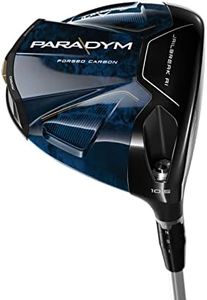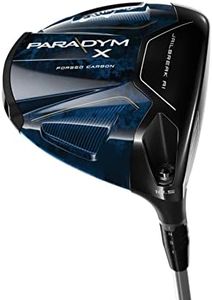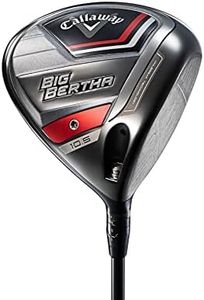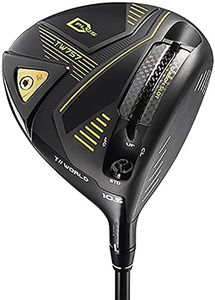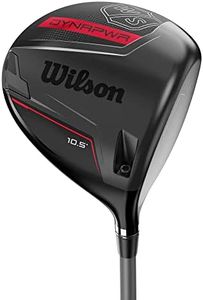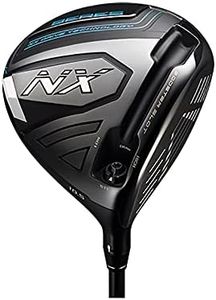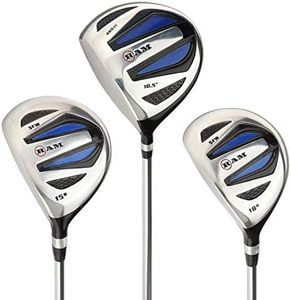We Use CookiesWe use cookies to enhance the security, performance,
functionality and for analytical and promotional activities. By continuing to browse this site you
are agreeing to our privacy policy
10 Best Golf Drivers
From leading brands and best sellers available on the web.Buying Guide for the Best Golf Drivers
Choosing the right golf driver can have a big impact on your game, helping you hit longer and straighter shots off the tee. It's important to consider your playing style, skill level, and physical strength when picking a driver. Instead of focusing solely on what’s popular, you should understand what specs mean and how they relate to your swing and goals. The right driver for you will support your strengths and help compensate for weaknesses, making the game more enjoyable and improving your performance.LoftLoft refers to the angle of the clubface relative to the shaft and ground. This angle affects the height and distance of your shots. Drivers typically have lofts between about 8 and 14 degrees. Lower loft (8–10 degrees) is usually better for players with fast swing speeds who want a lower ball flight, while higher loft (11–14 degrees) can help beginners or those with slower swing speeds get the ball up in the air more easily. When choosing loft, think about your typical ball flight and swing speed—a higher loft can provide more control and forgiveness, while a lower loft can offer more distance if you have the power and control to use it effectively.
Shaft FlexShaft flex describes how much the shaft of the driver bends during your swing. The common categories are extra stiff (X), stiff (S), regular (R), senior (A), and ladies (L) flex. If you have a faster swing speed, a stiffer shaft will help keep your shots straighter and more consistent. If your swing is slower, a more flexible shaft will help you launch the ball and maximize distance. To choose the right flex, try to match it to your swing speed and how the club feels during a swing—too stiff or too flexible can make it harder to control your shots.
Clubhead Size and ShapeModern drivers come in a variety of sizes and shapes, with the largest allowed clubhead size being 460cc (cubic centimeters). Larger clubheads usually offer a bigger 'sweet spot,' making them more forgiving for off-center hits. Smaller heads can give more control and workability for experienced players. The shape can also affect how the club feels when you swing it and how you line it up to the ball. Choose a size and shape that inspires confidence when you look down at the ball and gives you the best balance between forgiveness and control.
AdjustabilityMany modern drivers offer adjustable features, such as moveable weights and adjustable hosels, allowing you to change characteristics like loft, lie angle, and center of gravity. This adjustability lets you fine-tune the club to fit your swing or to adapt if your technique changes. If you like tweaking equipment or want to experiment to find the best setup, an adjustable driver is a good choice. If you prefer simplicity, a non-adjustable driver can be easier to use and less intimidating.
Weight and BalanceThe overall weight of the driver and how that weight is distributed (balance) play a big role in how the club feels and performs. Lighter drivers can help increase swing speed, which may be useful for players with slower swings, but might sacrifice some control. Heavier drivers can provide more consistency and are easier to control for players with faster swings. The balance or weighting—toward the head or the handle—affects how easy it is to square the clubface and the type of shot (draw, fade, straight) that is easiest to produce. Think about your natural swing and what feels most comfortable in your hands when making your choice.
